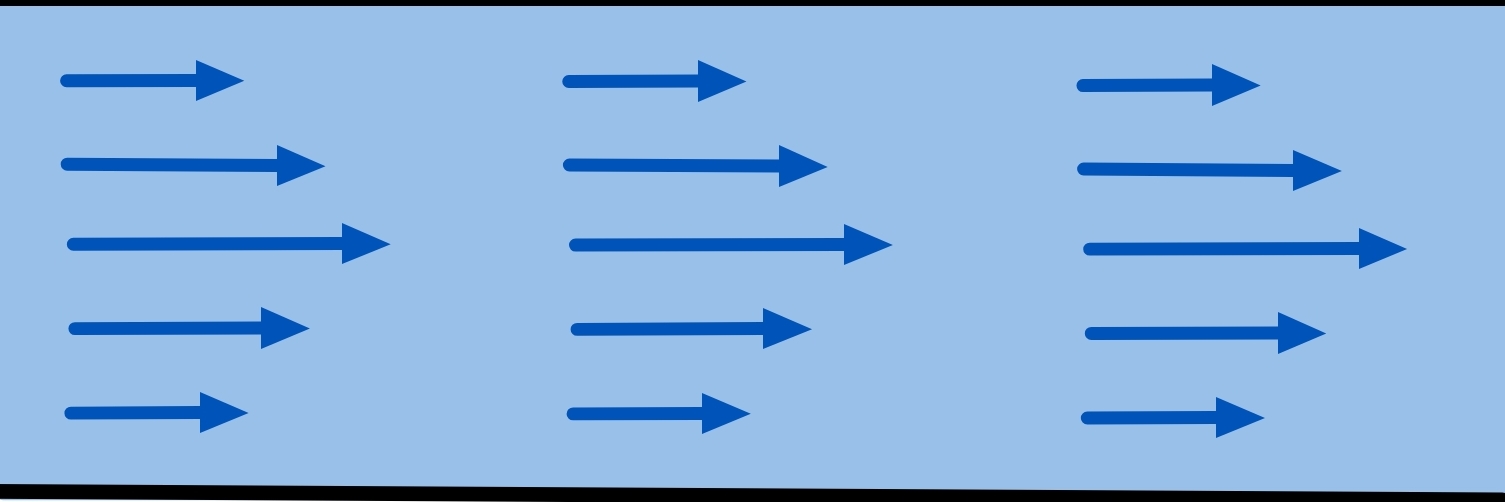Turbulence vs Laminar Flow
When the fluid flows through a pipe, an object, or some circumstance (slope), it can behave different from its original state. For example, when water flows steadily from a river downhill to a waterfall, the steady flow becomes turbulent.
In 1883, British physicist Osborne Reynolds conducted a groundbreaking experiment that revealed how these flow patterns develop and transition from one to another. His work led to the dimensionless number that now bears his name, the Reynold’s Number.
Reynold’s Number
The Reynolds number (Re) predicts whether a flow is laminar or turbulent. It’s a dimensionless number comparing inertial and viscous forces:
\[=\frac{inertial \: force}{viscous \: force}\]
Where:
: fluid density (kg/m³)
- v : average velocity (m/s)
- D : characteristic length (e.g., pipe diameter)
- μ : dynamic viscosity (Pa·s)
: kinematic viscosity (m²/s)
Flow Type
Laminar : Re < 2,000
Transitional Turbulent : 2,000 < Re < 4,000
Turbulent : Re > 4,000
Turbulent vs Laminar Flow
Laminar Flow
Laminar flow is smooth and orderly. Fluid particles flow linearly. In parallel layers with no crossing of paths.

- Smooth streamlines
- Predictable velocity profile
- Low momentum diffusion
- Dominated by viscous forces
Turbulent Flow
Turbulent flow is chaotic. Fluid particles swirl and move in random paths, known as eddies. These vortices stir the flow, enhancing the momentum, thermal, and solute transport.

- Irregular streamlines
- Unpredictable velocity
- High momentum diffusion
- Dominated by inertial forces
Head Loss and Friction Factor
Darcy-Weisbach Equation
Head loss is related to the flow and the properties of the pipe according to the Darcy-Weisbach equation:
Where: : head loss (m)
f : Darcy friction factor
L : length of pipe (m)
D : diameter of pipe (m)
v : average velocity (m/s)
g : acceleration due to gravity (9.81 m/s²)
The Darcy friction factor f is not something we assume; it’s what we’re trying to solve, basedon measurements and theory (fluid dynamics). It is a measure of the resistance offered by the pipe to the flowing fluid.
It depends on two things:
- Reynolds number – Is the flow laminar or turbulent?
- Pipe roughness – Is the pipe smooth like (PVC) or rough like (old cast iron)?
For Laminar Flow
We will use the formula derived from the Reynold’s Number:
\[f= \frac{64}{Re}\]
For Turbulent Flow
Turbulent flow is governed by the Navier-Stokes equations, but these cannot be solved analytically for turbulent flow. Instead, engineers use:
- Darcy-Weisbach equation with turbulent friction factors
- We can use the Moody Chart or
- Colebrook Equation:
Note: In most tests like Board Exams, GATE, and PEng, friction factor is given.
Frequently Asked Questions (FAQs)
1. When does Laminar Flow Occur
Laminar flow occurs in situations like slow-moving fluids (low-velocities), small dimensions(microchannels), high viscosities (oils, syrups).
2. When does Turbulent Flow Occur?
Turbulent flow occur in situations like fast-moving fluids (high-velocities), large area (industrial pipes, rivers), and low viscosities (air and most gases).
3. Why Transition Occurs from Laminar to Turbulent Flow?
It occurs due to instability of the flow, this happens due to small disturbances (roughness, vibrations, and fluctuations)






